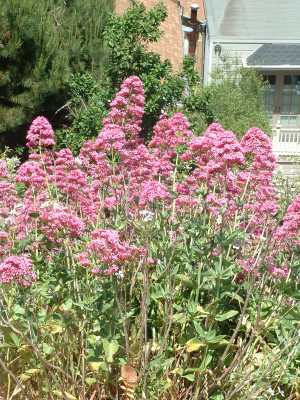Valeriana rubra
Valeriana rubra is a species of plant in the Valerianaceae family, which is known for its medicinal and ornamental uses. This species, like many in the Valeriana genus, is often sought after for its potential health benefits, particularly in the realm of herbal medicine where it is used to treat various ailments.
Description[edit | edit source]
Valeriana rubra is a perennial herb that can grow to a height of up to 1 meter. It features small, fragrant pink or light red flowers which bloom in the summer. The leaves of the plant are lanceolate to ovate, and it develops a rhizomatous root system that is characteristic of the Valeriana genus.
Habitat and Distribution[edit | edit source]
This plant is native to certain regions, although the specific geographic distribution of Valeriana rubra is not well-documented. It tends to prefer moist, well-drained soils and can often be found in meadows, woodlands, and along stream banks. The adaptability of the plant to various environmental conditions makes it a resilient species within its native range.
Cultivation and Uses[edit | edit source]
Valeriana rubra is cultivated both as an ornamental plant, due to its attractive flowers and foliage, and for medicinal purposes. In herbal medicine, parts of the plant, particularly the roots, are used to prepare teas, tinctures, and extracts. These preparations are believed to help with insomnia, anxiety, and digestive problems, reflecting the traditional use of Valerian species as sedatives and relaxants.
The cultivation of Valeriana rubra requires attention to soil moisture and sunlight exposure. It thrives in partially shaded to fully sunny locations and prefers moist, fertile soil. Propagation is typically done through seed or division of the rhizomes in the spring or fall.
Phytochemistry and Pharmacology[edit | edit source]
The pharmacological properties of Valeriana rubra are attributed to its diverse phytochemical composition, which includes valerenic acid, iridoids, and flavonoids. These compounds are thought to interact with the gamma-aminobutyric acid (GABA) receptor, a mechanism that is believed to contribute to the plant's sedative effects. However, scientific studies specifically focusing on Valeriana rubra are limited, and much of the knowledge about its medicinal properties is extrapolated from research on other Valeriana species.
Conservation Status[edit | edit source]
The conservation status of Valeriana rubra has not been extensively studied, and it is not listed on the IUCN Red List of Threatened Species. However, like many plants with limited distributions, it could be susceptible to habitat loss and environmental changes. Conservation efforts for the species would benefit from more detailed research on its habitat requirements, population dynamics, and threats.
Conclusion[edit | edit source]
Valeriana rubra is a species with both ornamental and medicinal value, contributing to biodiversity in its native habitat and offering potential health benefits. Further research into its cultivation, phytochemistry, and pharmacology could enhance understanding of its uses and conservation needs.
Navigation: Wellness - Encyclopedia - Health topics - Disease Index - Drugs - World Directory - Gray's Anatomy - Keto diet - Recipes
Search WikiMD
Ad.Tired of being Overweight? Try W8MD's physician weight loss program.
Semaglutide (Ozempic / Wegovy and Tirzepatide (Mounjaro / Zepbound) available.
Advertise on WikiMD
WikiMD is not a substitute for professional medical advice. See full disclaimer.
Credits:Most images are courtesy of Wikimedia commons, and templates Wikipedia, licensed under CC BY SA or similar.Contributors: Prab R. Tumpati, MD

